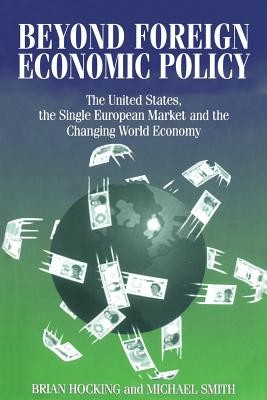
- We will send in 10–14 business days.
- Author: Richard Smith
- Publisher: Bloomsbury Publishing PLC
- Year: 1998
- ISBN-10: 1855672693
- ISBN-13: 9781855672697
- Format: 15.4 x 23.4 x 1.7 cm, minkšti viršeliai
- Language: English
- SAVE -10% with code: EXTRA
Reviews
Description
Focusing on US policies towards the Single European Market, this volume analyzes the changing character of foreign economic policy. It argues that an erosion of the boundaries demarcating foreign and domestic policy has occurred as a result of developments on both
domestic and international fronts. Consequently, the conduct of policy has become more densely textured, as parties from subnational,
national and international levels interact in pursuit of their goals in the economic arena. In turn, this economic environment is becoming both "globalized" and yet simultaneously "localixed", as the international economy impacts differentially on sectoral and territorial domestic interests. The opening chapter introduces the issues raised by the study, whilst developing an analytical framework for the ensuing empirical chapters. The volume itself comprises two sections: Part One explores the principal influences on the shaping of foreign economic relations and trade policy in the post-Cold War era, with reference to the GATT and NAFTA. Part Two illustrates the general framework of US trade relations, focusing on those with the EU.
EXTRA 10 % discount with code: EXTRA
The promotion ends in 23d.19:42:10
The discount code is valid when purchasing from 10 €. Discounts do not stack.
- Author: Richard Smith
- Publisher: Bloomsbury Publishing PLC
- Year: 1998
- ISBN-10: 1855672693
- ISBN-13: 9781855672697
- Format: 15.4 x 23.4 x 1.7 cm, minkšti viršeliai
- Language: English English
Focusing on US policies towards the Single European Market, this volume analyzes the changing character of foreign economic policy. It argues that an erosion of the boundaries demarcating foreign and domestic policy has occurred as a result of developments on both
domestic and international fronts. Consequently, the conduct of policy has become more densely textured, as parties from subnational,
national and international levels interact in pursuit of their goals in the economic arena. In turn, this economic environment is becoming both "globalized" and yet simultaneously "localixed", as the international economy impacts differentially on sectoral and territorial domestic interests. The opening chapter introduces the issues raised by the study, whilst developing an analytical framework for the ensuing empirical chapters. The volume itself comprises two sections: Part One explores the principal influences on the shaping of foreign economic relations and trade policy in the post-Cold War era, with reference to the GATT and NAFTA. Part Two illustrates the general framework of US trade relations, focusing on those with the EU.


Reviews